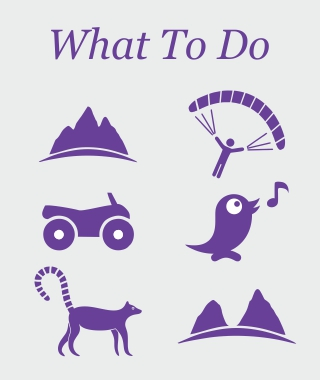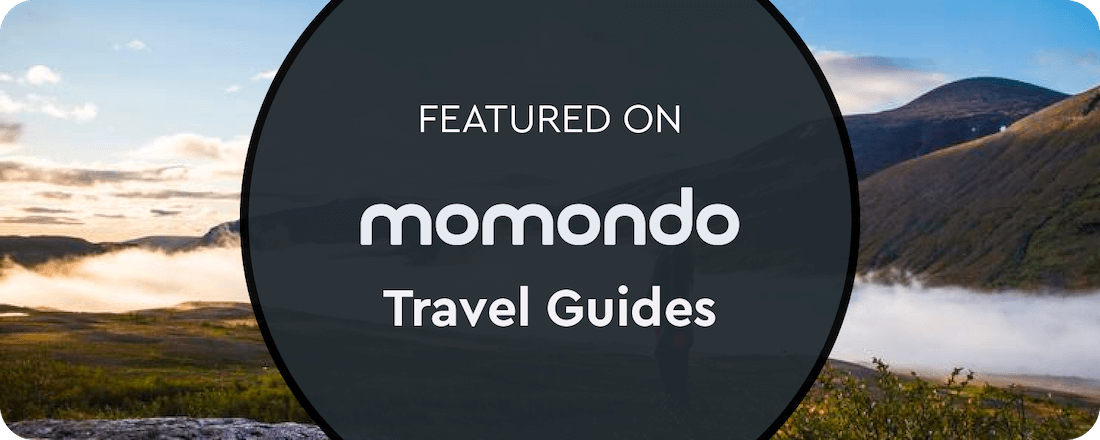Ranomafana National Park. The rainforest’s gem
Meaning ‘hot water’ in Malagasy, due to the hot springs found in the area, Ranomafana National Park is one of the most picturesque national parks in Madagascar. Covering a mountainous area of 435km2, the park is set at altitudes that range between 500 and 1200m in a vast tract, comprised mainly of dense rainforest. The rare golden bamboo lemur was discovered here in 1986 by Dr. Patricia Wright, which led to the area gaining National Park status. It now provides a protected environment for these endangered animals and is one of the island’s most accessible and appealing stops on any itinerary.
Sprawled across the ridges and valleys of the upper Namorona River basin its thick tangle of trees and plants is bathed by a constant flow of moist air drifting up from the Indian Ocean, helping to make this park one of the most biodiverse places on the planet. More than 1025 species of trees and other plants have been recorded here to date, spread across several distinct domains from lowland rainforest, through mid-altitude to highland rainforest. The forests are interspersed with tree ferns and lichens and offer – mostly in November – blooming orchids. These fantastic rainforests gives you a maximum of endemism, and every year new plant and animal species are discovered.
In addition to its densely forested hills, the protected area is characterised by numerous small streams, which plummet down to the beautiful Namorona River, which bisects the park and produces electricity for the surrounding areas at the hydroelectric power station of Ranomafana. In this first ecological live museum of Madagascar, one learns how to overcome the fear of the snakes for example by taking the Placida in his arms, the typical boa of our island. It is also possible to carry out excursions on an easy mountainous track to admire many cascades and waterfalls. The various trails make it possible to reach steep slopes hills.
Ranomafana National Park quick facts:
*Wildlife spotting: no fewer than 12 species of lemurs can be found here as well as 118 species of birds (roughly half the island’s total) and the immense wildlife is completed by 62 species of reptiles (chameleons, snakes and fringed and satanic leaf-tailed geckos are pretty common), 98 species of frogs, 90 species of butterflies, 350 species of spiders and several species of fishes and crayfishes. Other mammals include 7 species of tenrecs, 8 species of bats and 6 species of carnivorous, like the Malagasy striped civet and some mongooses.
*Bamboo lemurs: the park was created in 1991 due it the discovery of the golden bamboo lemur 5 years earlier. The golden and the greater bamboo lemurs are threatened with extinction - they are classified as an endangered species by the World Conservation Union (IUCN).
*The park is grouped with other eastern rainforest parks and was declared World Heritage Site UNESCO in 2007.
*Stony Brook University New York’s extraordinary Centre ValBio, the park’s showpiece research base which opened in 2011, has a radical but sensitive design, bringing visitors into close proximity with the forest, without having destroyed any of the environment in the course of its building. Founded by the renowned primatologist Patricia Wright, it promotes research into the rainforest ecosystem and works with the community on sustainable development. You can visit and get a tour of the facilities.
There are four main districts at Ranomafana, with trails of varying lengths cut through them: on the north side the districts of Vohiparara and the much larger Soarano; and on the south side the popular Varibolo area and further south the much bigger Varijatsy. There are many kilometers of trails here, ranging from slightly arduous to quite hard-core – but such is the richness and diversity of the wildlife around you that as long as you’re reasonably fit and have suitable footwear, you’re not likely to notice how strenuous the experience is until the next day. There are 7 different circuits in order to explore this marvelous Park. Please be aware that the shortest treks are also the most popular ones and trails can get quite crowded especially during the high season. The longer treks are much quieter and more rewarding from a wildlife watching point of view. We also offer special circuits: Botany, ornithology, herpetology, culture, etc…
WHAT OF WILDLIFE YOU WILL SEE? Lemur lovers will not be disappointed here with a total of 12 lemur species calling it home. In addition to the golden bamboo lemur, you may spot the rare Aye-Aye, Milne-Edward’s sifaka, black-and-white ruffed lemur, eastern woolly lemur, eastern grey bamboo lemur, red-bellied lemur, greater bamboo lemur, red-fronted brown lemur, Small-toothed sportive lemur, greater dwarf lemur and brown mouse lemur. Mammal life isn’t confined to lemurs: the long-legged and rather beguiling eastern red forest rat (Nesomys rufus) often makes an appearance on the trails, keeping two wary eyes open for a local predator, the handsomely marked fanaloka (Fossa fossana), which despite its scientific name is more like a genet or civet – and very partial to rat.
Birds are also wide spread in Ranomafana. Within excess of 118 bird species recorded, ornithologists would be wise to bring their binoculars to the park. There are some 30 endemic species of bird that are isolated to the region around Ranomafana including, but not limited to, a tiny terrestrial rail, the local and elusive slender-billed flufftail (Sarothrura watersi); the brilliantly plumaged pitta-like ground roller (Atelornis pittoides); the exceedingly secretive and rare brown mesite (Mesitornis unicolor); the shrike-like Pollen’s vanga (Xenopirostris polleni); and the short-legged ground roller (Brachypteracias leptosomus), which you may spot – or more likely your guide may spot – perched on a low branch in the understorey, obligingly motionless for low-light photography. Also look out for the velvet asity (Philepitta castanea): the male of the species turns out smartly for the breeding season in shiny navy-blue-green, with fleshy turquoise trimmings, like a little turkey wattle, on his head.
Herpetology enthusiasts will be enraptured by Ranomafana. Ranomafana is a hotspot especially for reptile lovers: Numerous amazing and rare chameleon species can be found here, among them Furcifer balteatus, Calumma glawi, Calumma parsonii parsonii, Calumma crypticum with its blue legs or the small pygmy chameleon Palleon nasus. Roadside night walks reveal sleeping adult chameleons on every other branch and vulnerable hatchlings no bigger than a safety pin, clinging to the tips of leaves, eyes shut tight, instinctively poised to detect an approaching snake. Ranomafana’s standout chameleons are the handsome double-nosed O’Shaughnessy’s chameleon (Calumma oshaughnessyi) and the diminutive short-nosed chameleon (Calumma nasutum), with its comical, blue-tinted, Pinocchio-like proboscis.
If you have an eye for geckos, do not miss the bizarre leaf-tailed gecko Uroplatus phantasticus, which is well camouflaged in the foliage and its cousins the mossy leaf-tailed (U. sikorae) and giant leaf-tailed (U. fimbriatus). Frog friends will also find their personal paradise here: Only few locations offer opportunities for so many frog sightings in the foliage, in old bamboo trunks or on trees. Tree frogs perch, gulping, on branches above streams (the larger, creamy blue-throated specimens are called white-lipped bright-eyed frogs, Boophis albilabris). The number of insect species is enormously huge, especially butterflies can be seen and admired, as well as the unique giraffe necked weevil (Trachelophorus giraffae). The nocturnal comet moth (Argema mittrei), one of the biggest butterflies of the Earth, can be commonly met in Ranomafana and sometimes even flies near the hotels.
As regards vegetation, giant tree ferns are common at Ranomafana (their trunks traditionally used for building) as are many species of orchids. The other key plant in the park is bamboo, or rather eleven species of bamboo, all endemic to Madagascar, including the giant bamboo (Cathariostachis madagascariensis), one of the biggest species in the world. Among the plants which grow in these rain forests, many are used by the Tanala and the Betsileo for medical purposes. There are precious wood and palm trees, many carnivorous plants. One attractive but invasive exotic tree, the strawberry guava (Psidium cattleianum) is everywhere and if you’re here during the May/June fruiting season you’re likely to see lemurs right away: the fragrant guava fruit are a popular seasonal staple for lively red-bellied and red-fronted brown lemurs and for the handsome southern black-and-white ruffed lemurs which have been studied extensively and are quite easy to see.
The best times to visit are April to May and August to December, though if you want to kayak or raft on the river (which we can be organized), you should visit roughly from December to April. Although on average it rains here two hundred days every year, the heaviest rainfall comes in the hot season (Dec–March); temperatures cool down in the drier austral winter, and many nocturnal species hibernate in June and July. August, when it begins to get warmer again, sees the start of the spring breeding season, which runs until November. Note that on rainy days, which occur even in the so-called dry season, lemurs and many other animals can be quite elusive while they take shelter.
Ranomafana National Park perfectly rhymes with Manakara through a veritable garden of exoticism Mananjary, you can take a fascinating and very useful trip, "Cruise on the Pangalanes Canal Ranomafana NP – Manakara and railway Côte Est - Fianar, the "little train of the cliffs", to discover the Manombo Special Reserve and experience the super railway Côte Est - Fianar. Well... or vice versa, "Cruise on the Pangalanes Canal Manakara - Ranomafana NP via Mananjary ". But you can do it just in quicker, but less interesting way to drive a 4x4 car on a dirt road.
A trip to Ranomafana can also be well connected with the Andasibe-Mantadia National Park. You can get access to all the sights that the East of Madagascar offers or return to the capital Antananarivo by taking "Cruise on the Pangalanes Canal Ranomafana NP-Andasibe-Mantadia NP via Mananjary, Nosy Varika and Mahanoro".
Watch more photos about Ranomafana National Park here.







